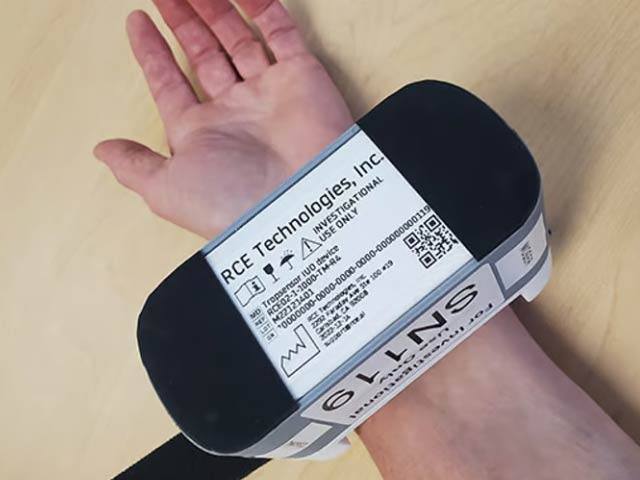Troponin protein in the blood can be quickly identified with a device called Troposensor. Photo: New Atlas
Seattle, USA: In cardiology, the most important test immediately after a heart attack is the troponin level. Now a sensor worn on the wrist can detect it in the emergency room, but also monitor for further complications of the disease.
Currently, the trial is going on at the Harborview Medical Center in the American city of Seattle, which has been named ‘Trop Sensor’. Troponin is a protein that is released after a heart attack and is measured in a blood test.
In the traditional test, blood samples are taken and the test takes several hours. But now the ‘troposensor’ gives the result in just a few (three to five) minutes. Now cardiologists and other doctors in the emergency room can easily perform at least important tests like troponin by wearing this sensor in first aid. This will help the doctors immensely in starting the right treatment immediately. Every minute counts for a heart attack patient.
A conventional ECG (electrocardiogram) indicates that there is something wrong with the heart, but cardiac arrest, valve malfunction and acute heart attack can only be confirmed with a troponin test.
The Troop Sensor is being tested under the supervision of Dr. Graham Nicol. According to Dr. Graham, this sensor could prove life-saving for any patient who is brought to the hospital in an emergency with chest pain. This will quickly determine whether the chest pain is due to another cause or indeed a blockage in the arteries.
(function(d, s, id){
var js, fjs = d.getElementsByTagName(s)[0];
if (d.getElementById(id)) {return;}
js = d.createElement(s); js.id = id;
js.src = “//connect.facebook.net/en_US/sdk.js#xfbml=1&version=v2.3&appId=770767426360150”;
fjs.parentNode.insertBefore(js, fjs);
}(document, ‘script’, ‘facebook-jssdk’));
(function(d, s, id) {
var js, fjs = d.getElementsByTagName(s)[0];
if (d.getElementById(id)) return;
js = d.createElement(s); js.id = id;
js.src = “//connect.facebook.net/en_GB/sdk.js#xfbml=1&version=v2.7”;
fjs.parentNode.insertBefore(js, fjs);
}(document, ‘script’, ‘facebook-jssdk’));


